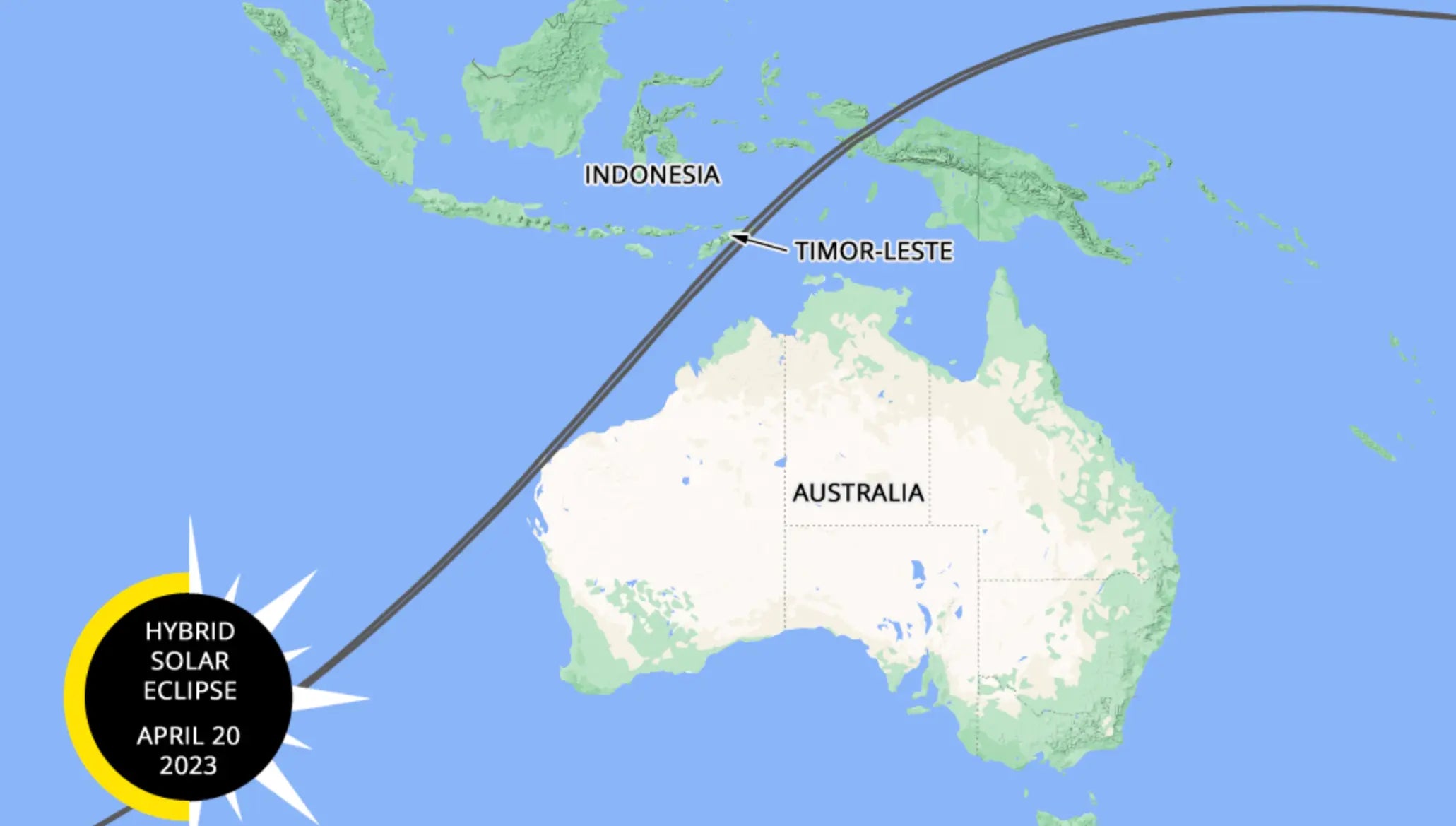Introduction
On April 20, 2023, the skies over Western Australia offered a celestial spectacle that captivated both amateur stargazers and professional astronomers alike: a hybrid solar eclipse. This rare event, which occurs when the Moon passes directly in front of the Sun, was visible in its full glory over North West Cape, a remote peninsula in Western Australia. The event was so significant that it was live-streamed by timeanddate.com in collaboration with Perth Observatory, allowing people worldwide to witness the awe-inspiring phenomenon.
What is a Hybrid Solar Eclipse?
A hybrid solar eclipse is a unique type of solar eclipse that transitions between a total and an annular eclipse. During the event, the Moon blocks the bright solar disk, revealing the Sun's outer atmosphere, known as the corona. This results in a mesmerizing display of white streamers extending away from the Sun. In the 2023 event, a pinkish, peak-like feature was also visible in the lower left part of the corona, identified as a solar prominence—a towering structure of solar material suspended above the Sun by magnetic fields.
The Path of Totality
The path of totality for this eclipse passed exclusively over North West Cape, making it a must-see event for eclipse chasers. The eclipse was part of a larger celestial event series, with other eclipses following it, adding to the excitement and scientific interest. Regions that saw at least a partial eclipse included South/East Asia, Australia, the Pacific, the Indian Ocean, and Antarctica.
Scientific Significance
NASA's Goddard Space Flight Center provided a composite image captured from Exmouth, Australia, offering a detailed view of the Sun's corona and the aforementioned solar prominence. Such events offer invaluable opportunities for scientists to study the Sun's outer atmosphere and magnetic fields.
Public Engagement
The 2023 Australian eclipse was not just a treat for scientists; it was a public spectacle. The live stream by timeanddate.com and Perth Observatory allowed millions worldwide to experience the event in real-time. This kind of public engagement is crucial for fostering interest in astronomy and science in general.
Future Eclipses
If you missed this one, don't worry. The next total solar eclipse will cross Mexico, the United States, and Canada on April 8, 2024. These events are part of a larger celestial dance that continues to captivate humanity, reminding us of our small but significant place in the cosmos.
Conclusion
The 2023 hybrid solar eclipse over Western Australia was a celestial event of both scientific and public significance. It offered a rare glimpse into the Sun's outer atmosphere and provided an opportunity for global engagement in astronomical observation. As we look forward to future eclipses, events like these remind us of the beauty and mystery of our universe, inspiring the next generation of astronomers and curious minds alike.
---
[1]: [Sky and Telescope - Plan Now for the 2023 Solar Eclipse in Western Australia](https://skyandtelescope.org/astronomy-news/plan-now-for-the-2023-solar-eclipse-in-western-australia/)
[2]: [NASA - Australian Total Solar Eclipse on April 20, 2023](https://www.nasa.gov/image-feature/goddard/2023/sun/australian-total-solar-eclipse-on-april-20-2023)
[3]: [Time and Date - Total Solar Eclipse on April 20, 2023](https://www.timeanddate.com/eclipse/solar/2023-april-20)

